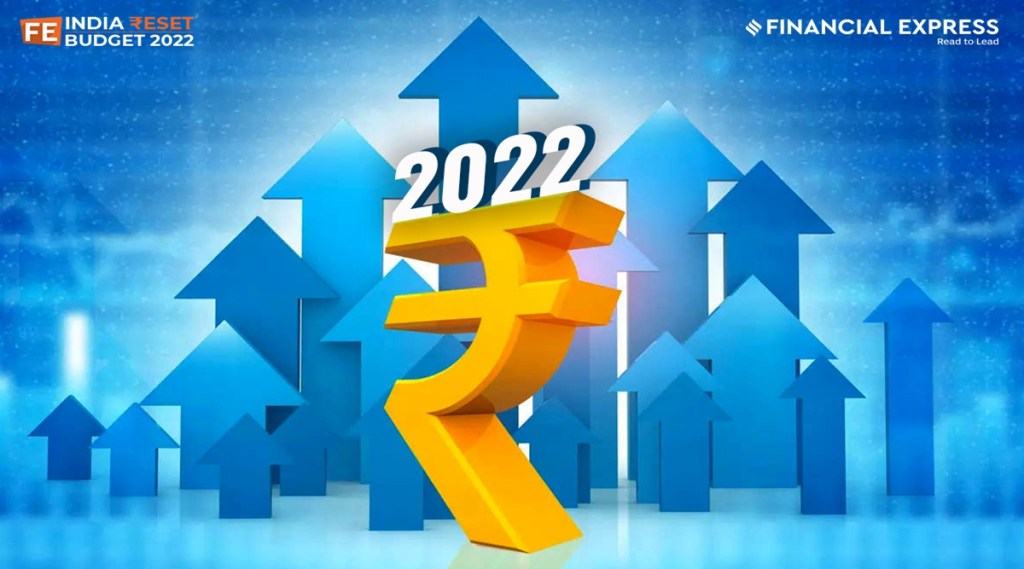A redeeming factor of this budget has been an increase in tax collection, from Rs 22.17 lakh crore (budget estimate) to Rs 25.16 lakh crore (revised estimate, or RE). However, till December 2021, the gross tax collection was Rs 19.28 lakh crore. Considering a minimum tax collection of Rs 6.85 lakh crore collected in January–March 2021, the current year’s tax gross tax collection would be about Rs 26.13 lakh crore. It is very evident that FY22 tax collection RE has been underestimated by Rs 1-1.5 lakh crore. The government could have taken a more realistic estimate of tax collection this year based on the tax collected till December 2021 and used that money to fund the states or to ensure some relief for the taxpayers.
The FY22 disinvestment target of Rs 1.75 lakh crore has been cut to Rs 78,000 crore (RE). It appears that the target of Rs 1 lakh crore from LIC’s disinvestment has been cut to Rs 50,000 crore. The FY disinvestment target, at Rs 65,000 crore, is a gross underestimate of what the government could naturally get. The government is also seeing a huge increase in the dividend collection from PSUs and RBI, at Rs 1.43 lakh crore. However, for the next year, it has been pegged at a little over Rs 1 lakh crore.
The FY22 expenditure is going up to Rs 34.4 lakh crore (RE) from the budgeted Rs 32.46 lakh crore. This shows that despite the supplementary demands of Rs 3.23 lakh crore, there have been savings of about Rs 1 lakh crore in the overall budget. If one looks at the market borrowings this year, it was budgeted at Rs 12.05 lakh crore. It was brought down to Rs 10.46 lakh crore (RE), and goes up to Rs 14.95 lakh crore in FY23.
Tax collections in FY23 are budgeted at Rs 27.57 lakh crore, an increase of less than 10% over FY22. The tax collection could possibly be higher by Rs 1-1.5 lakh crore based on growth in direct taxes. The disinvestment proceeds and dividends receipts too can also be much higher. The tax revenues for FY23 have been estimated in a very conservative manner. The expenditure is expected to go up to Rs 35.08 lakh crore, a marginal increase, with focus on infrastructure, social sector, housing, water, health, etc. Over all, the financial statements show that the economy is in a healthy state, with a positive bias towards increased tax revenues. If one looks at the details of spending, the big factor has been a massive increase of 35.4% in capital expenditure, from Rs 5.54 lakh crore to Rs 7.50 lakh crore. For the states, too, the incentive for capex has gone up from Rs 15,000 crore to Rs 1 lakh crore. The focus on increased spend on infrastructure will make India more productive and stronger much later. As far as start-ups are concerned, there is some disappointment. While surcharge for all capital gains has been reduced from 37% to 15%, long term capital gains tax on unlisted stock remains at 20%. This discriminates against the Indian investor who has to pay 20% as against a foreign investor who pays 10%.
Also Read | Focusing on growth, with prudence
The government has extended the tax deduction scheme for start-ups by one more year. But, like some government schemes, the conditions are so onerous that only about 600 start-ups of over 12,000 funded start-ups can benefit. This is a scheme where the conditions make sure that nobody can use the benefit given by Parliament. The government has promised to set up an expert committee to remove all difficulties for venture capital. The government could have taken many more decisions, too. The promise of increased funding for thematic funds is very encouraging.
The 30% tax on sale of digital assets is very good. It means that sale/transfer of crypto-assets held by any Indian tax resident will be taxed at 30%. The target of reducing voluntary winding up to six months removes a big barrier to growth. The increase in defence purchases domestically from 58% to 68% indicates that the government means business here.
The government is making sure that the odds of seeing an increase in tax collection next year are in its favour; it is being realistic on capital and overall spending. It has reduced spending on food subsidies, given the special scheme expires on March 31. The budget must be commended for continuing the good work on infrastructure and growth. The big negative is that the long-suffering middle class has not been given any tax relief.
The writer is Chairman, Aarin Capital Partners. Co-authored with S Krishnan, a tax consultant. Views are personal.

